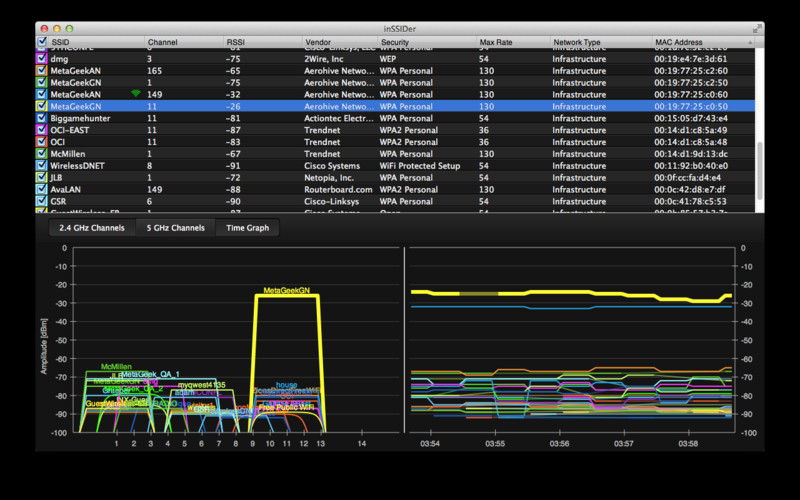

Use the tools we covered above to identify the least congested wireless channel for your Wi-Fi network. Switch to the Least-Congested Wireless Channel

If there's a microwave oven, aquarium, or anything else that seems to be obstructing the signal from your router and producing a dead zone, move the obstruction (or your router) and see if that eliminates the dead zone. As such, try rearranging your place for ideal signal strength. The inSSIDer wi-fi scanner can do various tasks, including finding open Wi-Fi access points, tracking signal strength and saving logs with GPS records.
#Inssider signal windows#
If your Wi-Fi router is sitting next to a metal filing cabinet, that's going to reduce your signal strength. inSSIDer is a popular Wi-Fi scanner for Microsoft Windows and OS X operating systems. Identify and Reposition Obstructions Between You and the Router If your antenna is already at the perfect angle, try attaching a more powerful antenna for a wider broadcast range. If it's pointing horizontally, you won't get the same amount of coverage. Adjust or Replace Your Router's AntennaĮnsure your wireless router's antenna is up and pointing vertically. Basic functionality is available for free, but certain features require a paid membership. InSSIDer Technician links networks, access points, and channels together with the Network Drilldown button, and can be found in most tables. The inSSIDer wi-fi scanner can do various tasks, including finding open Wi-Fi access points, tracking signal strength and saving logs with GPS records. Click on the Network Drilldown button to visit the associated item. Try moving the router to a more central location in the middle of your house, apartment, or office. InSSIDer Technician draws a network shape in the 2.4 and 5 GHz channels graph for every network it hears with your WiFi adapter. If your router is in one corner of your house, apartment, or office, there may be a dead zone in the opposite corner of your building.


 0 kommentar(er)
0 kommentar(er)
